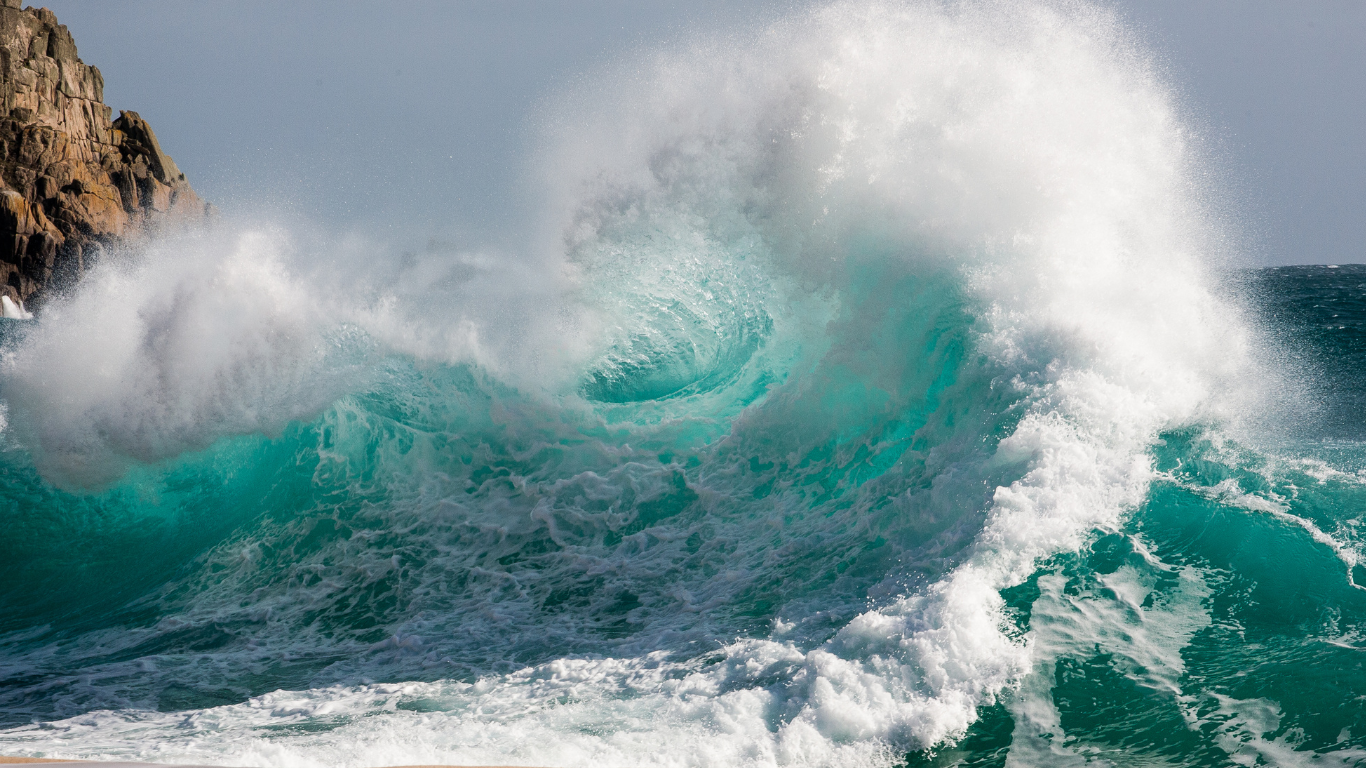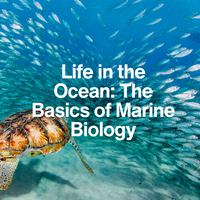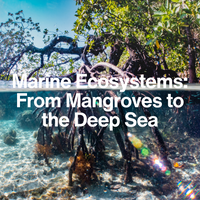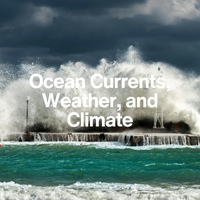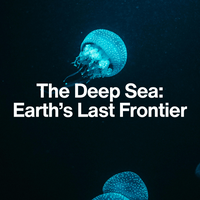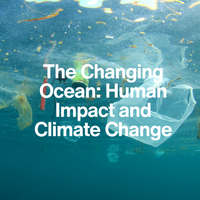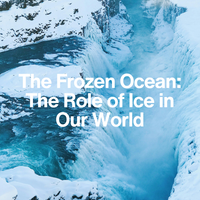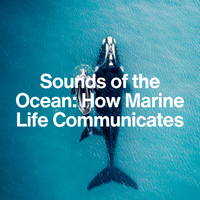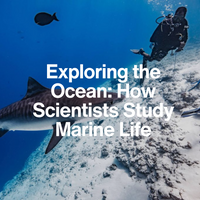LESSON 4
Hurricanes and Storms: How the Ocean Creates Extreme Weather
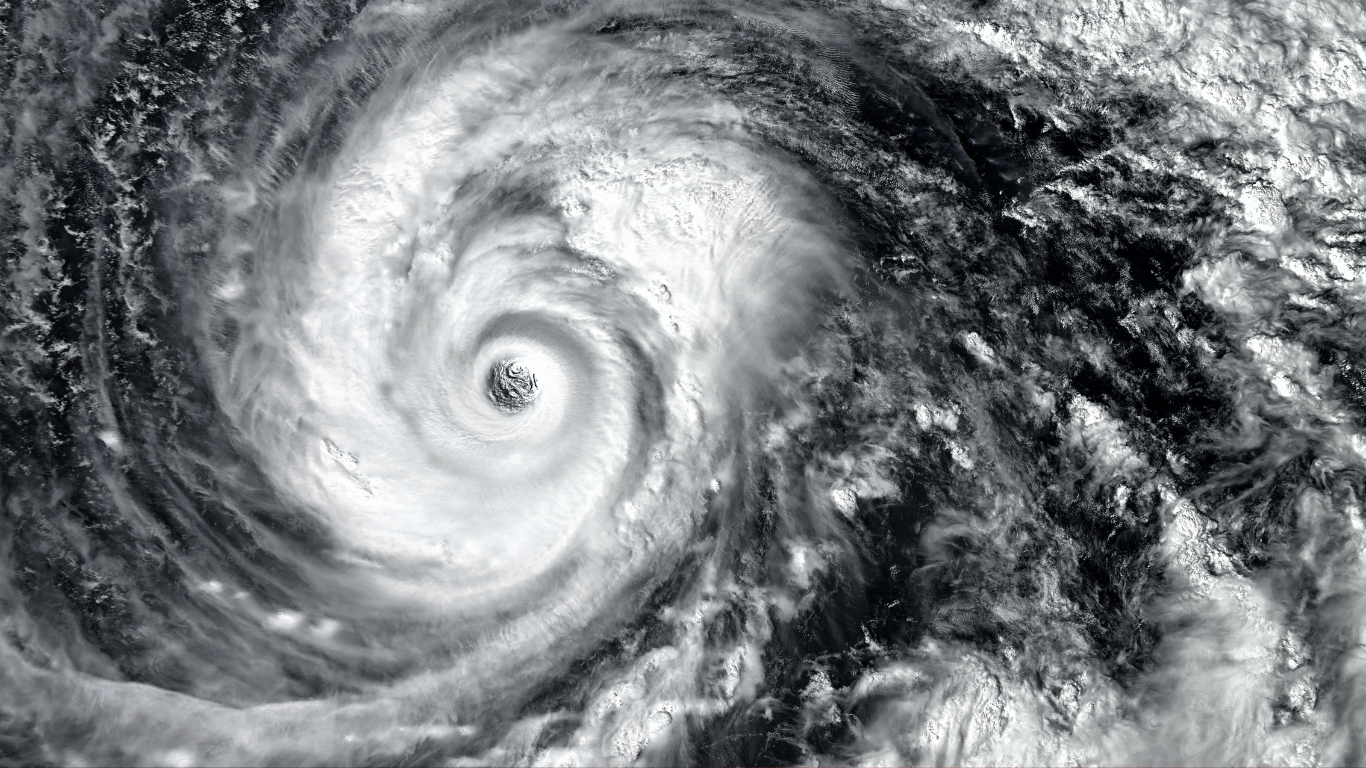
Introduction:
The Ocean’s Wildest Power
When you think of hurricanes, cyclones, or typhoons, you’re actually thinking of one type of colossal storm—and they all have one thing in common: They are born from the ocean.
The ocean’s stored heat doesn’t just warm marine life; it can fuel massive storms that reshape coastlines, alter weather patterns, and impact millions of lives.
In this lesson, we'll dive into how the ocean drives these extreme weather events—and why warming seas are making them more powerful.
1. What Is a Hurricane (or Cyclone or Typhoon)?
A hurricane is a gigantic, rotating weather system with spiralling bands of strong winds, torrential rain, and a calm centre called the eye.
Fun Fact
The calm eye of a hurricane, surrounded by walls of intense winds and rain, can stretch 30–60 km wide!
2. How Does the Ocean Create Hurricanes?
Here's the step-by-step recipe for a hurricane:
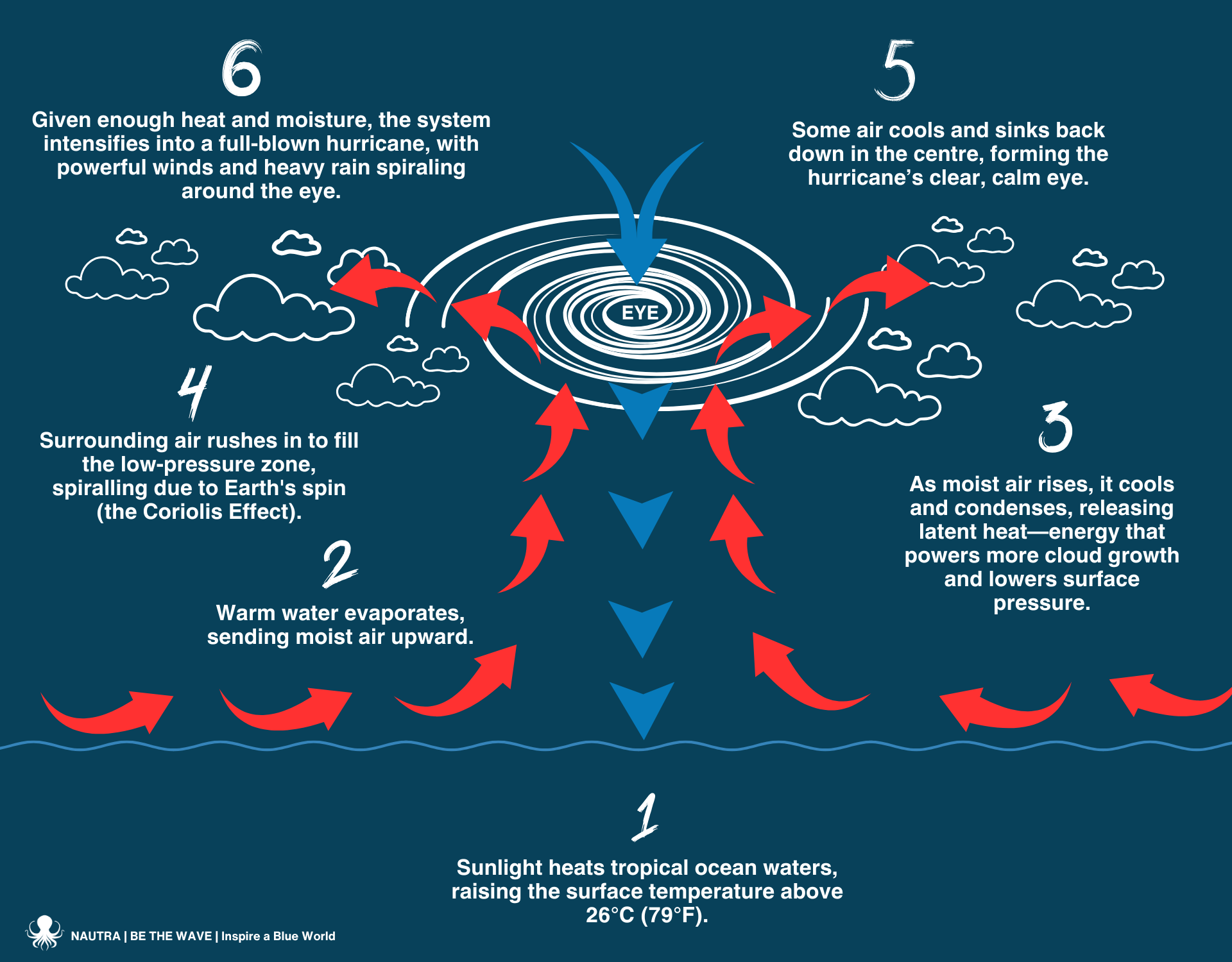
Fun Fact
A fully developed hurricane can release as much energy every day as 200 times the world's electrical energy production!
3. Why Warmer Oceans Mean Stronger Storms
Our oceans are heating up—and hurricanes are noticing.
Did You Know?
Recent years have seen Category 4 and 5 storms becoming more frequent—a trend scientists link directly to rising ocean temperatures caused by climate change.
4. Other Extreme Weather Driven by the Ocean
The ocean's influence doesn’t stop at hurricanes.
Fun Fact
Atmospheric rivers carry more water than the Amazon River—and can dump it all over land in just a few days!
Conclusion
Respect the Ocean’s Power
The ocean is not just a life-support system; it's also the engine behind some of Earth's most extreme and life-changing weather events. Understanding how ocean heat fuels hurricanes—and how climate change is amplifying them—is crucial as we face an era of stronger, wetter, and more destructive storms.
Every coastal city, every island, and even inland regions are tied to the ocean’s moods. The better we understand it, the better we can prepare for what’s to come.
Key Takeaways:
Hurricanes, cyclones, and typhoons are different names for the same storm system.
Warm ocean water powers the formation and growth of extreme weather events.
Climate change is making storms more intense, wetter, and faster-growing.
The ocean shapes all kinds of storms, from hurricanes to blizzards and monsoons.
NEXT LESSON
How Does the Ocean Store and Move Heat Around the Planet?
We'll uncover how the ocean acts as Earth’s greatest climate moderator—storing and redistributing heat across the globe!
